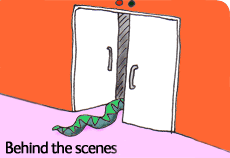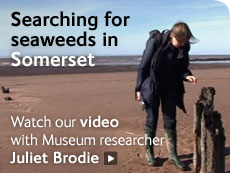Taking part in the survey
Look out for 12 kinds of seaweed to record in this survey. You don’t need to be an expert as our easy-to-use identification guide should allow everyone, from children to scientists, to take part.
- Go for a walk - explore your favourite seashore and tell us about the different types of seaweed you find. We want to survey living seaweeds, so choose a shore that has some rocks - on sandy beaches seaweeds are washed up by the tide and are dead.
- Find 12 seaweeds - look for 12 different kinds of seaweed with the help of the easy-to-use identification guide PDF (2.0 MB) produced by the Museum.
- Record your sightings - take a recording form PDF (359.6 KB) to the shore with you and follow the instructions in the identification guide.
- Send in your information - when you get home, tell us about the seaweeds you find using our online system, or by posting completed forms to The Big Seaweed Search, Department of Botany, The Natural History Museum, Cromwell Road, London, SW7 5BD.
- There is no deadline - you can send in records at any time of the year and take part as many times as you like.
What will happen to your records
By taking part, you will be helping scientists from the British Phycological Society and Natural History Museum learn more about these incredible, but often overlooked organisms.
The more information you send us, the more we can learn about this important group.
We will analyse your records. The results will help us understand where UK seaweeds can be found and how they are being affected by factors such as changing sea conditions, climate change and non-native seaweeds such as wireweed. We will also assess how seaweed distributions are changing.
The results
Your data will be added to our online interactive map. As we analyse the data, we will post updates on what your records show and how they are being used.
Resources
The Big Seaweed Search - identification guide PDF (2.0 MB)
The Big Seaweed Search - recording form PDF (359.6 KB)
Toolbox

There are 27 km of specimen shelves in the Darwin Centre - the same distance as between the Museum and Junction 6 of the M1.

